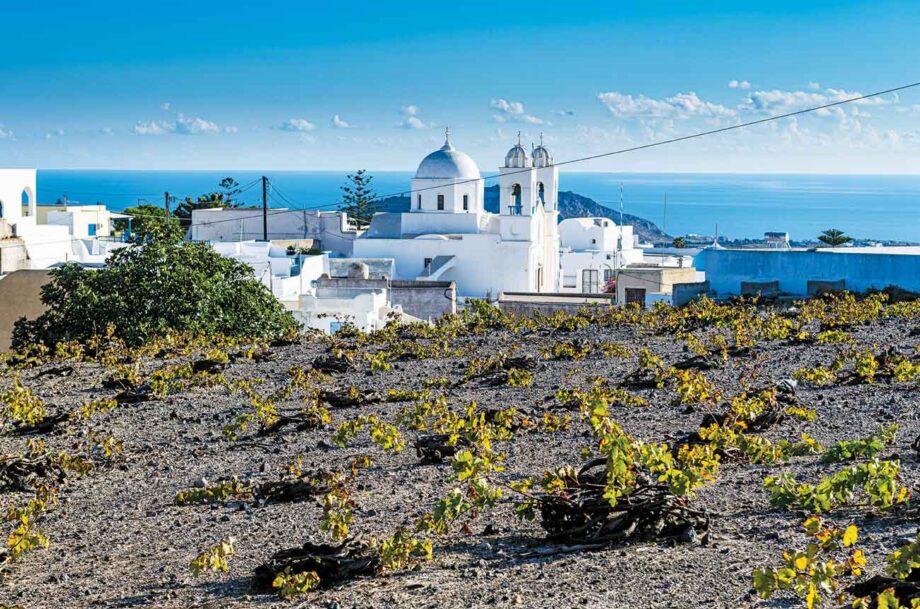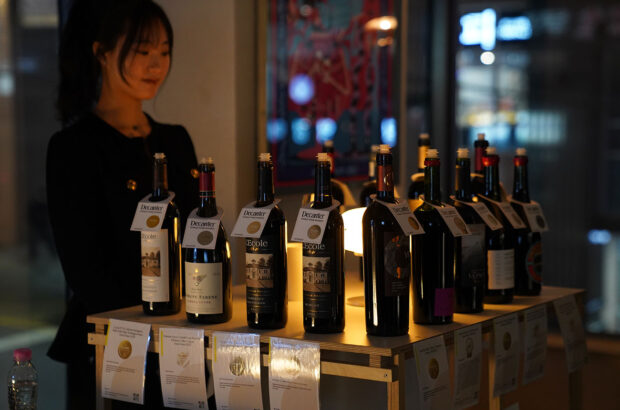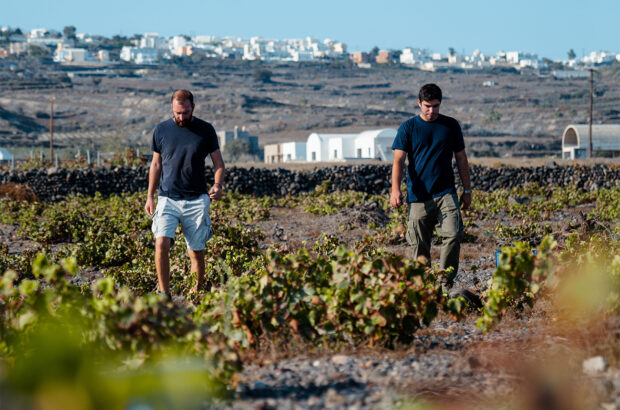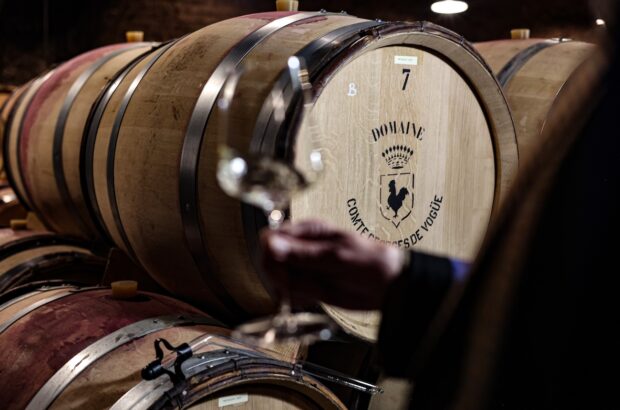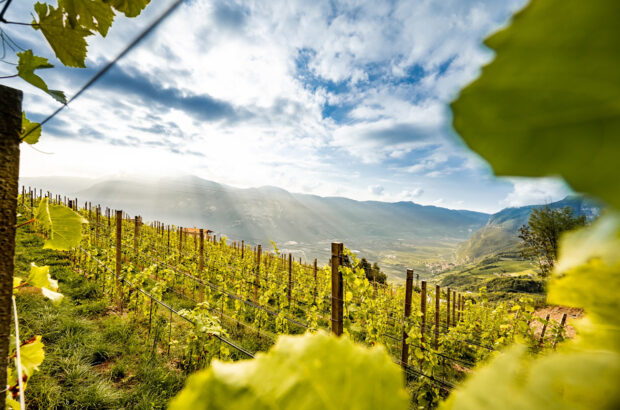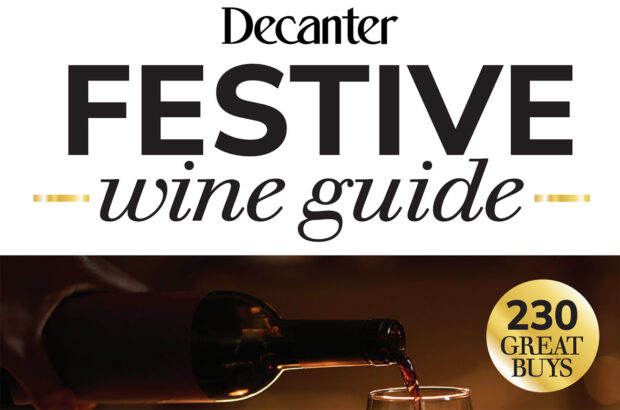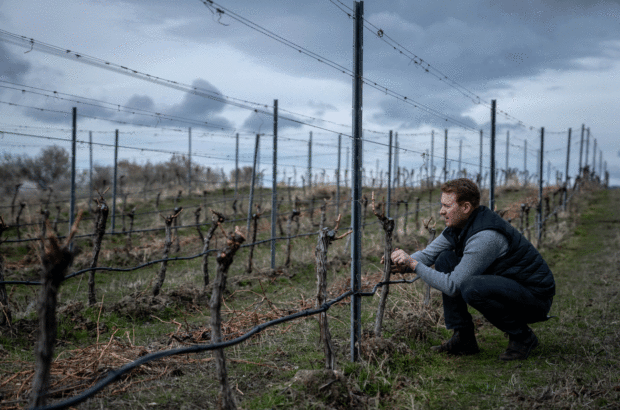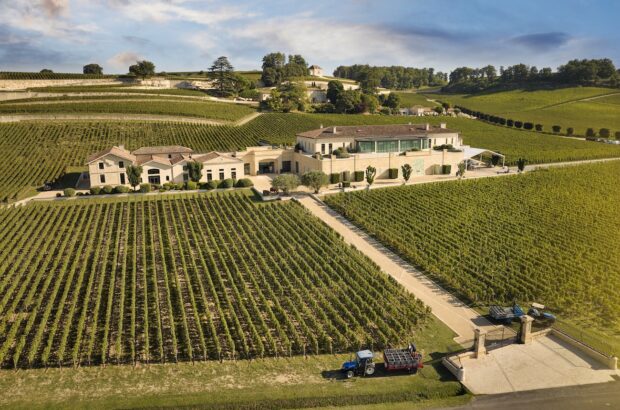What is it about a really big book that feels so luxurious? Its impracticality? Immovability? The sheer weight in your hands? Whatever it is, Assouline’s Wine & Travel series is like diving into a five-star hotel’s king-size bed graced with high-thread-count sheets and goose-down bedding, safe in the knowledge that there’s a freestanding bathtub with suitably indulgent bath salts and oils on hand for when you emerge – a fluffy robe and slippers, too, of course.
Mediterranean Islands (£105 Assouline, July 2025), which joins the France, Italy and (also new) United States of America books (all £100), is so delicious-looking – a cloth-bound hardback in a rich cornflower yellow, with gold foil and bold black block print – that you almost don’t want to open it. Yet it invites you, so alluringly, to discover ‘the sunlit soul of the Mediterranean terroir’. The end-papers are covered with wine labels, further enticing you to burrow within.

It’s the epitome of a coffee-table book: high GSM, satin finish and packed with imagery. It’s intended as pure escapism, but I can’t see it hitting home with any true wine or travel enthusiast. Although it’s just shy of 300 pages, I’d be surprised if the total word count matched an issue of Decanter – with brief introductions to each of the island regions covered, skimming over any of the depth that makes each so fascinating. The copy is even double-spaced – almost as if they didn’t have enough to fill the pages.
Author Enrico Bernardo is a sommelier by trade and clearly someone who loves wine – as shines through in his evocative turns of phrase (Marco de Bartoli’s Vecchio Samperi, for example, is described as ‘brazen, almost arrogant’) – but he isn’t given the space to share his knowledge.
Even if you were to look at this as a collection of photography, you’d be disappointed – some images are beautiful, but many are generic stock – think oversaturated sunsets and tourist snaps better suited to a Lonely Planet travel guide, making for an inconsistent feel. Combine this with the script font used for pullquotes (not just naff, it’s hard to read) and you’ve suddenly got something that feels reminiscent of a school project, rather than the plush publication this is meant to be.
There’s no practical advice on visiting the regions or wineries mentioned, no tips on where to eat, drink or stay, and no maps to guide you through more intricate regions (in fact, you’ll find some rather misleading illustrated pseudo-maps in places). There is at least a compendium of wineries at the back – but even that is just a list, with no indication on the style, size or quality.
If you’re looking for a weighty tome to match the colour scheme of your new conservatory, then this book is for you. But, if you want to learn more about the Mediterranean islands and their wines, you’ll find plenty of better sources elsewhere.
The rule of three
The team behind The Classic Wine Library has been busy, with a flurry of new releases: an updated edition of Raymond Blake’s Côte d’Or (May 2025), The Wines of Central and Southern Spain by Decanter Contributing Editor Sarah Jane Evans MW (June 2025) and – perhaps most intriguingly – The Wines of Brazil by Tufi Neder Meyer (May 2025). All published by Académie du Vin Library and priced £35.



